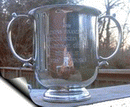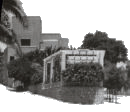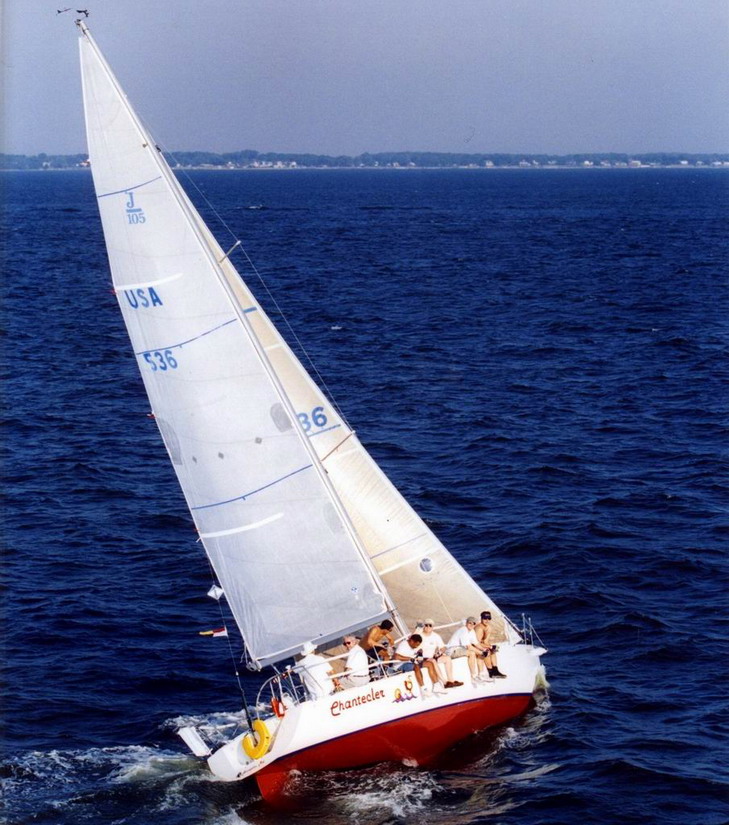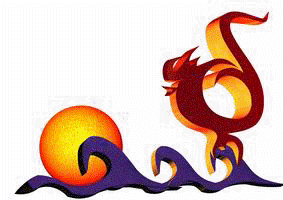
Under sail
Various pictures of the J105 beating under genoa and main
![]()
Discussion on the offshore capabilities of the J105
Extracts from http://www.j105.org/~oldforum/discus/messages/4/49.html?1052765664#POST1015
| Jose R. Villalon Mazatlan, Mexico
Posted on Wednesday, November 21, 2001 - 8:14 pm: |
I
currently club-race a 1976 C&C38 and am considering purchasing a used
J105. I was attracted to the 105 for the ease of sailing it shorthanded.
However I live in Mexico and OD is out of the question. I will be racing
under PHRF. I am also interested in campaigning oceanic doublehanded
races such as the Newport-Bermuda and possibly the Pineapple Cup. Would
the 105´s OD characteristics be a hindrance for PHRF racing? Or does the
ease of doublehanded A-sail use offset any speed given up to masthead
rigged PHRFérs. Is this a good and PHRF competitive offshore boat?
Thanks for your feedback... Jose R. Villalon C&C 38-Galapagos |
| Jaffar Bentchikou / Annapolis
Posted on Thursday, November 22, 2001 - 3:41 pm: |
Jose, here
are a few elements to consider. • The ease of sailing the J/105 is true. A doublehanded J/105 class has been introduced in 2001 in Annapolis and had a few point-to-point races on the schedule (no real offshore race yet). • The A-spin is a big plus for point-to-point races with lots of reaching. • PHRF ratings do not vary with the wind. The J/105 with class sails has a very unfavorable rating in light air (below 5 kn any genoa boat in the class will beat any J/105; from 5 to 10 the gap decreases) and a very favorable one in heavy air (above 15-20 kn the J/105 has few competitors in the same PHRF class). • You can use a genoa with the J/105 but the wide chainplate base prevents the boat from pointing well above 8-9 kn of wind. • You can of course use a larger A-spin for PHRF races. The current class size of 77 m2 is quite small for the boat but will be increased to 89 m2 in 2002. Many J/105s racing PHRF go all the way and use a 110 m2 A-spinnaker. • There is an easy way to have a masthead rigged A-spinnaker on a J/105 if, and it is a big if, you have one French-built J/105 (I own one). These boats have a Sparcraft mast which is much stronger from the hounds up and the spinnaker halyard exits the mast at the top and then goes down through a couple of U-bolts on the front of the mast at the class legal height. So, changing from class setup to masthead setup for PHRF is quite easy. • I am also considering doing one offshore race (Annapolis-Bermuda) with my J/105 and I was puzzled by the fact that very few J/105s have entered known offshore races while its predecessor, the J/35, has a good track record offshore (even winning the Sydney-Hobart in her class!). Most sailing pros I have discussed the subject with explain the difference by the lack of comfort in the cabin for an offshore crew spending several days and nights racing. There is no question that the hull and the rig can do a good job there but there is no headroom in the cabin and the alcohol stove is not gimbaled in the TPI-built units. • As a side comment to the preceding point, the French-built J/105s have again a slight plus as they come from the factory with a more comfortable interior and a 2-burner gimbaled propane stove. • I also would be much interested if other J/105 owners with offshore experience would care to comment. |
| Jaffar Bentchikou / Annapolis
Posted on Thursday, November 22, 2001 - 4:09 pm: |
I forgot
to mention in my posting that you could also use a Code Zero A-spinnaker
for close reaching legs. I have one with my new J/105 Chantecler. Its
range of use is relatively narrow (close reaching to broad reaching) but
when you can use it is a killer as your competitors are close reaching
under jib or genoa. The sail is a class-legal spinnaker but its best use
is for PHRF racing where you can change spinnakers during the race (not
permitted for class races). Jaffar homepage at ..\index.htm |
|
Mike Tucker Hamilton Bermuda Posted on Friday, November 23, 2001 - 5:26 pm: |
I concur
with the last two messages. Here in Bermuda two of the boats have
reaching A-spinnakers from Doyle (not quite Code 0)and we usually sail
under IMS. At the right moment the performance is outstanding. Can't use
the reachers in really high wind though. We now have 3 French boats in Bermuda and the internal layout is much better. I have done two short ocean hops in varied weather and the position of the stove,sink and cooler make a big difference. Headroom will always be an issue and we can't pretend she is a Swan when reaching. The dodger is essential for long distance work. But in one race we came back from the deep blue running along the wave crests for 3 hours largely at 15.5 knots - smiles all round and a real roller coaster ride galloping down the big ocean swell. I haven't used the mast head spinnaker halyard except in light air. We use the 110 chute a lot and in light airs it touches the water unless we haul it up to the mast head. While the French mast is stronger above the hounds, we believe it looks suspiciously like a Euro J120 mast which uses running back stays so we haven't pushed the higher halyard in heavy air. We also just made a local class decision to remove the mast head halyard to make us even with the TPI built boats. Mike Joji BER205 |
| Jose R. Villalon Mazatlan, Mexico
Posted on Saturday, November 24, 2001 - 2:13 pm: |
Many
thanks for the complete feedback Jaffar and Mike. I am beginning to feel
more confident in my bias towards the J105. I guess the bottom line
question is: If you were to sail strickly PHRF buoy races with an
occassional PHRF oceanic race and were always sailing shorthanded
(between 1 and 4 on boat), would the J105 be your choice? I am convinced
that I would set-up with a 155% genoa, adjustable track cars, and a 110m
masthead kite; I believe this would make me competitive around the cans.
How would one deal with the small cold storage capacity? Rgds, Jose R. Villalon Galapagos |
| Andrew Gillis/Newport
Posted on Sunday, November 25, 2001 - 5:07 am: |
Jose: While I've been sailing for years last year was my first with the j105. That said, expect to point about 5-8 degrees lower (with the genoa versus jib) than than the 27-28 degrees that is possible in most conditions with the jib. Unless the j35s attempt to carry 150s above ~19 knots true (when they become overpowered) they will eat you up up wind in most other conditions. Worse still, its not just the j35s but many half-way decent phrf boats that can outpoint a genoa j105. Watching your competitors as though they are riding elevators to windward as you race windward/leewards is a serious tactical disadvantage to say nothing of demoralizing. Because of this covers are far less effective and down right dangerous from a competitive standpoint. The 105 relies on offwind work to make its rating but this is reduced in square leeward course work. With the 110m2 kite at the hounds we saw some slight advantage. I know that the 105 has participated in the Bermuda 1-2 (from newport). However, I don't know if it is allowed to enter the Marion to Bermuda or its biannual partner the Newport to Bermuda race. I suspect it won't be allowed in the last as that race is open to boats with an IMS stability index of 115 or greater. Based on the IMS certificate that I have seen [available on the class site, I think] the 105 has a stability index of about 113.5. I hope that other Bermuda race sponsors take a different stance. Given all my harsh words I still have to tell you we love this boat. It is responsive and exciting to sail. It only takes a few reaches at 12-16 knots to leave a lasting grin on your face. In flat water the boat does (110m2 kite) 9-11 knots beam reaching in 13-17 knots true (although above 15-16 knots you are overpowered and should change down). Upwind it is very easily driven and can achieve 6 knots in fairly light air. We bought the 105 to one design race and given our few discouraging experiences at PHRF racing the boat this year, we'll probably stick to that. Certainly, cold storage is limited and if we have resorted to carrying an extra cooler when we travel for an overnight with 4-5 on board. This isn't entirely satisfactory at sea, but with the cooler on the sole against the rear face of the main bulkhead at least the weight is in the best possible place. I think that freeze dried food or even better Ready-to eat meals would be the only way to go for a 3-5 day offshore race for a crew (or even just 2). |
| Arthur Treach/Oriental, N.C.
Posted on Sunday, November 25, 2001 - 9:53 am: |
The j105
is a great daysailor or one-design racer, but I can't honestly fathom
ocean racing in a PHRF fleet. The boat is neither designed for that, nor
reasonable equipped to do so. I have raced both PHRF and bouys for seven
years, and would encourage anyone who enjoys one-design or daysailing to
purchase one. I would discourage an ocean racer to buy one. I would
emphatically discourage a PHRF ocean racer to buy one. It's a great
boat, and without going into details about flaws for PHRF (which few
people do), or flaws about taking her bluewater racing (which some have
done, mostly once), I would again discourage a bluewater sailor against
a j105. She certainly could handle it, but I was far from happy given
the layout-- especially about the scars on my head from the 5'4"
headroom. For ocean racing, you must have headroom. You must have a
gimballed stove. The j105 is a great boat, and there is not an owner out
there that can argue in good conscience about the previous two
statements. Just make sure you personally take her on an ocean race before you make buy her. Especially now, at the peak of their popularity. This boat is a one-design racer/cruiser and should not be compared with a PHRF champ or ocean racer, but she does what she was designed to do and fits into her niche like a champ. Additionally, I believe the minimum LOA for Bermuda races are 35', but check with the race organizer. FWIW, I would politely decline any offer to race 750 miles offshore on this boat. Not because it's not capable, but because it just isn't designed to take the reasonable person that far. I don't mean to disparage the j105. She is a beautiful one-design bouy and overnight racer, but one cannot confuse her with an ocean going vessel. In my estimation, I have logged thousands of miles on the j105, varying from 60+ gusts to 0.0 knots. She is a beauty to sail in anything over 10 knots as one design. As far a PHRF, buy a PHRF boat. You will save tens of thousands, even after the sailmaker has had his way with you! Disclaimer: this opinion is worth what you paid for it, but I couldn't help but to chime in given your posts! Good luck and fair winds! |
| Jaffar Bentchikou / Annapolis
Posted on Sunday, November 25, 2001 - 9:21 pm: |
Arthur:
The minimum length to enter the 2002 BOR (Annapolis - Bermuda) is 30 feet (FAQ). I have not yet decided to enter it because I still have lots of issues to solve, most of them related to cabin and storage space (which may limit the crew to a total of four). As an example, the 2002 NOR (Race & Objectives) requires fuel for 300 nm and water and stores for 10 days. In 2000, boats with comparable PHRF rating did the 756 nm race in less than six days. The boat has not been initially designed to do such races but a look at the J/105 Hall of Fame shows that J/105 sailors have done much longer distances. The key question is 'is it reasonable?' and the answer may depend more on the quality and experience of the crew and on the quality of the preparation than on the J/105 itself. Now, I am honored that you have a 'personal observation' from NC on my racing performance around Annapolis. Should I abstain from making any web posting until I reach the top third of the fleet? How many top third of any fleet are contributing to this discussion? I believed that I could contribute to answer Jose's interesting question and I did it without mentioning that I did one Annapolis-Horta (Açores) crossing because it was done on a 45' Jeanneau Sunkiss and thus was not very relevant. I am afraid that this part of your posting, contrarily to the rest, was not very constructive. |
| Art Teach
Posted on Monday, November 26, 2001 - 8:55 am: |
Jaffar,
Don't read this if you are a sensitive man. I communicate in a quite direct way, and as such, you may not like my phraseology (is that a word?). Just keep in mind, it is one salty man's opinion; primarily intended for Jose's benefit, not to disparage anyone. I apoligize if you fail to recognize the value of my opinion for Jose, however I assure you it comes from the top third of the Bay fleet. My opining was intended to be quite constructive, but as a pirate, I tend to be a bit edgy on my prose. Please don't be offended, and I doubt my opinion would have surfaced on this thread without your "wrongheaded" (more opining) posting. So, please continue to post as a member of the bottom 2/3 of the racing fleet! ;-) Feel free to correct me if I am wrong regarding the previous claim. Disclaimer: previous partnered boat record and present included. Also, I find it interesting that you chose a 45' cruising boat to do your offshore trip to Horta. It was probably a more seamanlike choice than, say a 35' boat with a fixed stove, no headroom, and a stability rating of a J105. The j105 regardless, remains to be shown as a solid boat. Quite sound and capable, of course, but then again I have a friend who singlehanded from the Chesapeake to the Azores and then to the Pacific in a wooden handbuilt twenty footer. It is a matter of what is reasonable and seamanly, which may vary by individual, of course. Hey, only one man died on the Mini-transat this year(his empty harness dragging behind his well-trimmed vessel, that's not so bad. Or is it? I believe we agree here. I would not recommend offshore singlehanding in general, and my assertion to Jose is that he take his $140k and put it in a bluewater boat, not a daysailor. Assuming, of course, he intends to do ocean races, as he says. Then again, he could buy your j105, right? Jaffar, I will see you in Bermuda, if you overcome your issues, which there are plenty. And I have no doubt the boat can make the trek. I suspect I will be sipping a margarita, by the time you make harbor. I will toast you when you arrive! Time will tell, and actions are clearly louder than e-chat. Best of luck to you (truly). Please don't take my comments personally. I think Jose deserves a realistic perspective, and felt compelled to give him one. The j105 is designed for around the bouys and overnight racing, IMHO. Anyone who disagrees, and I suspect most agree here, should chime in. Art |
| Nelson Weiderman J/105 #300
Posted on Monday, November 26, 2001 - 9:29 am: |
I don't ordinarily do this, but I'll remind you that this is an "Owners Forum". Mr. Treach or Mr. Teach or Mr. Buellizinsky is apparently not an owner and apparently does not know the rules of etiquette for this Forum. I will delete any future posts of this nature. |
| Daniel Heun / Lake Michigan Fleet 5
Posted on Monday, November 26, 2001 - 1:51 pm: |
I would
like to add my perspective to the Handicapped Long Distance racing
discussion. Fleet 5 in Lake Michigan used to race in the 300+ mile
Chicago to Mackinaw race within a PHRF section with all the sails we
could take for the PHRF number. Kevlar Mains and Genoas, over sized
Polyester Spinakers were the norm. The problem is that J105 is One
design boats. Not many owners wanted to buy PHRF sails for a single,
albeit significant race. We could only field around 6 boats on the
starting line. PHRF and ODR do not mix well. Fleet 5 decided to change
our posture with long distance events and race as a ODR section with
J105 ODR sails and rules, except for crew weight and storm sails. This
returning to our One desgin roots so to speak has increase boats on the
line by a factor of 3. It is important to keep things in perspective, in
long distance racing, when you beat your direct ODR competitors, that is
something to be proud about, and when you beat a 70 footer on corrected
time, that is something to drink about. The Chicago to Mack race committee scores the J105 section separately and is awarded separately as well as scores our ODR rating in IMS against the overall fleet of 300 boats. That way we get section and overall fleet scores. My recommendation for a fleet wishing to organize Long Distance racing - go ODR and get scored separetely, that way you will get more J105s on the starting line. Buying a J105 and making it a PHRF or IMS racer can be done, but the odds of you beating a true PHRF or IMS racer are stacked against you. Don't do it - the J105 is an excellent ODR boat and you can race ODR in long distance race. Race against other J105s like we have done in the Chicago to Mackinaw race and you will be rewarded with more boats on the line. In the question regarding is the J105 a good platform for long distance racing. Yes, if the race is not too long. In lake Michigan, we carry food, water, safety gear, anchors, duffle bags, storm sails for six crew for three days. With all the stuff, it begins to get crowded. Six to eight days on a J105 racing with 4 to 5 or 6 crew will be really pushing it. I my opinion, it just doesn't sound fun for six to eight days. We have a category 2 list that must be used for long distance racing to give you an idea of cost. http://j105.org/fleet5/category2.htm Now a J120 is a different matter........... |
| Bill Hunt/Rhapsody 487/Boothbay Harbor, ME
Posted on Monday, November 26, 2001 - 11:11 pm: |
I did some
testing with my boat (#487) with Ullman Jib alone vs. Witch (#200) with
North 150 genoa. I was actually driving Witch during the test and while
the jib definitely out points the genny, up to about 11 knots the genny
had better VMG to weather. After that test I am very tempted to get a
145% or so that is cut to clear the top spreader, I think that would
make a sufficient difference to gain back much of the lost pointing
without losing significant speed. Has anyone got experience with this
type of cut? BTW: If the conditions are right, nothing will touch a J/105. Labor day weekend Rhapsody and Witch finished 1,2 boat for boat and 1, 3 corrected in a 17 boat fleet that included a Farr 43 among others. The Farr finished 3rd boat for boat about 3 minutes behind Witch and 7 behind us on Rhapsody. Rhapsody was sailed by myself, my wife and my 13 year old daughter. This was a non-spinnaker race using class main and jib on both 105's. The Farr was carrying a full genoa. |
| Ben Jatlow, Annapolis
Posted on Saturday, December 01, 2001 - 2:26 pm: |
This
message is for Art Teach. My name is Ben Jatlow and I sail on/take care
of Osprey, #106. Although I rarely post messages in the J/105 forum I
read the input weekly. I have never met Jaffar, but as a fellow Fleet 3
sailor, I feel that I need to say something here. First of all, I agree
with Jaffar in that the J/105 (french or american), is perfectly capable
boat of sailing to Bermuda. The abilities of the crew on board only
dictate the pleasure of the trip and the speed in getting there. Your
remark about Airbus' being build in France is ridiculous. That crash has
nothing to do with French people's sailing ability or ability to build a
boat (if French J/105's were not seaworthy, J/Boats wold not licenece
them to be made there). Besides, wasn't that crash was Airbus' first
crash in 25 years? Second, I would like to say something about your
comments to Jaffar as to the validity of his postings becausue of his
standing in the fleet. Someones bouy racing results do not reflect their
offshore sailing capabilities at all. I will use my father as an
example. Being only 17 years old, I still live with him. He has always
been a crusier who has several thousand miles of ocean sailing
experience. If my dad was to skipper a J/105 in any J/105 event, he
would most likely be at the bottom of the pack, however if there was a
J/105 start in the Bermuda racen and he competed in that (with the same
crew as if he skippered a bouy race), his result would most likely be at
the top of the fleet. Another point is that you seemed to minimize
Jaffar's offshore passaage to Horta becasue it was in a 45 foot cruising
boat. I beleive the brand was Jeanneau. From what I know about the two
boats, I would feel safer in the J/105 than the Jeanneau. My last point
is about your margarita statement. Just becsaue someone has issues to
work out before a race such as the Bermuda race does not mean they are
going to do bad or have trouble if thats what you were implying. This
forum is very helpful to many J/105 sailors and remarks like the ones
you made are just not needed, especially if you are not affliated with a
J/105. If you are, those kind of remarks still are not needed. That
said, I think Jaffar gave Jose some good points to think about and good
luck to both of them in the future. Ben Jatlow Annapolis, MD |
| Jaffar Bentchikou /#536 Chantecler /Annapolis
Posted on Monday, May 12, 2003 - 1:54 pm: |
I came
across the old discussion above while searching the board on something
else. As an epilogue, I would like to say that I did the 2002 Annapolis-Bermuda race on Chantecler together with a couple of other J/105s. Chantecler was first to finish in Division III. Details are at : ..\Sail\2002_BOR.htm Thank you again Nelson and Ben. |
As a P.S. to the epilogue, I would be very surprised if the person posting under the pseudonym of Art Teach and who 'knew' me and my boat so well was not Bill B., a team member who raced for me on Jay Boat for about one season in 1999-2000. He had some qualities, but 'team player' was not among them and the disruption was so bad that we had to part ways. Here is my final email to him.
| From: Jaffar Sent: 26 JUN 06 Subject: Yesterday race |
Teammates: Results are not posted yet but there is no doubt that we were at the very bottom of the fleet. The wind recorded at Thomas Point was a steady 18-23 knots from 160-170 during the full race. It looked like the last day of the NOOD, but, even though we were at a perfect crew weight this time, a breakdown in communication and teamwork at the back of the boat prevented us to have the better result we were hoping at the start of the race. We have also tried to use a takedown line and this was another failure, with the spinnaker floating freely twice and only the wonderful damage control skills of Paul saved our new spinnaker and prevented a much larger ground loss at the leeward mark. Fortunately we had decided to douse early. Unfortunately Paul injured his bicep in the process. Paul, you have a big heart and I wish you prompt recovery. Let me know how you are doing. For the first time in 7 years of racing, I did not enjoy the race. The wind was on the strong side but this was the kind of weather where J105s are known to excel. Well, not us, anyway (my partner John has good success in this kind of weather). We had major main trim problems, it gave us a narrow or nonexistent groove, we were constantly falling into boats below us and I constantly overcompensated on the pinching side which also gave relief to the unusual weather helm we had most of the time. The synergy was negative between Bill, Barbara and myself in the back of the boat. Bill, you wanted to be given the full responsibility to trim the main but when it did not work out you refused to cooperate with me in finding what was wrong. Your attitude is disruptive. I believe now, thinking clearly about it, that our major problem was that the backstay was too tight. Your solution was to ease the cunningham, which had for direct consequence to pull the draft aft and to reduce the steering groove to negative numbers. You had so much trouble with the traveler's lines, the coarse and fine mainsheets that your weight was often too far off the rail. Barbara, the experiment with you as a full time strategist and part time helm reliever might have been better if we did not have our problems with the main. You have, correctly, focused your attention at times on improving our main trim but did not contribute much to a possible solution. You focused on the minor problem of the bubble at the luff of the main when our major problem was that the leech inverted along the head to clew diagonal. You refused to cooperate with me in solving the problem and kept nagging me about my steering. In the past, I thought that I could live with your overcritical attitude and that we will have to learn to cooperate and get a good synergy out of this cooperation. But yesterday's race showed that you were guessing as much as Bill on main trim, that the synergy objective was a long way off and that above all it was not going to be fun. So, Barbara and Bill, you have been with us, on and off, for a year or more. I have enjoyed most races with you and you have made efforts and sacrifices for the week-end races of the team, for which I thank you sincerely. I think however that it is time to take advantage of the July break to rebuild the core team around Janet, Tim and Paul in order to improve its cohesiveness. Janet, we will give up on using the takedown line. The wind was unfortunately a bit too strong before the start to practice well this time, but next time, we will work on the takedowns in order to facilitate your job, a critical one. Tim, we had turned the engine on and were ready to leave when you arrived. I know you are one of the steadiest team member, but next time try to give me one confirmation before the race, either by email or phone so that we can comfortably wait for you if you hit some unexpected problem the morning of the race. Jaffar |
![]()










